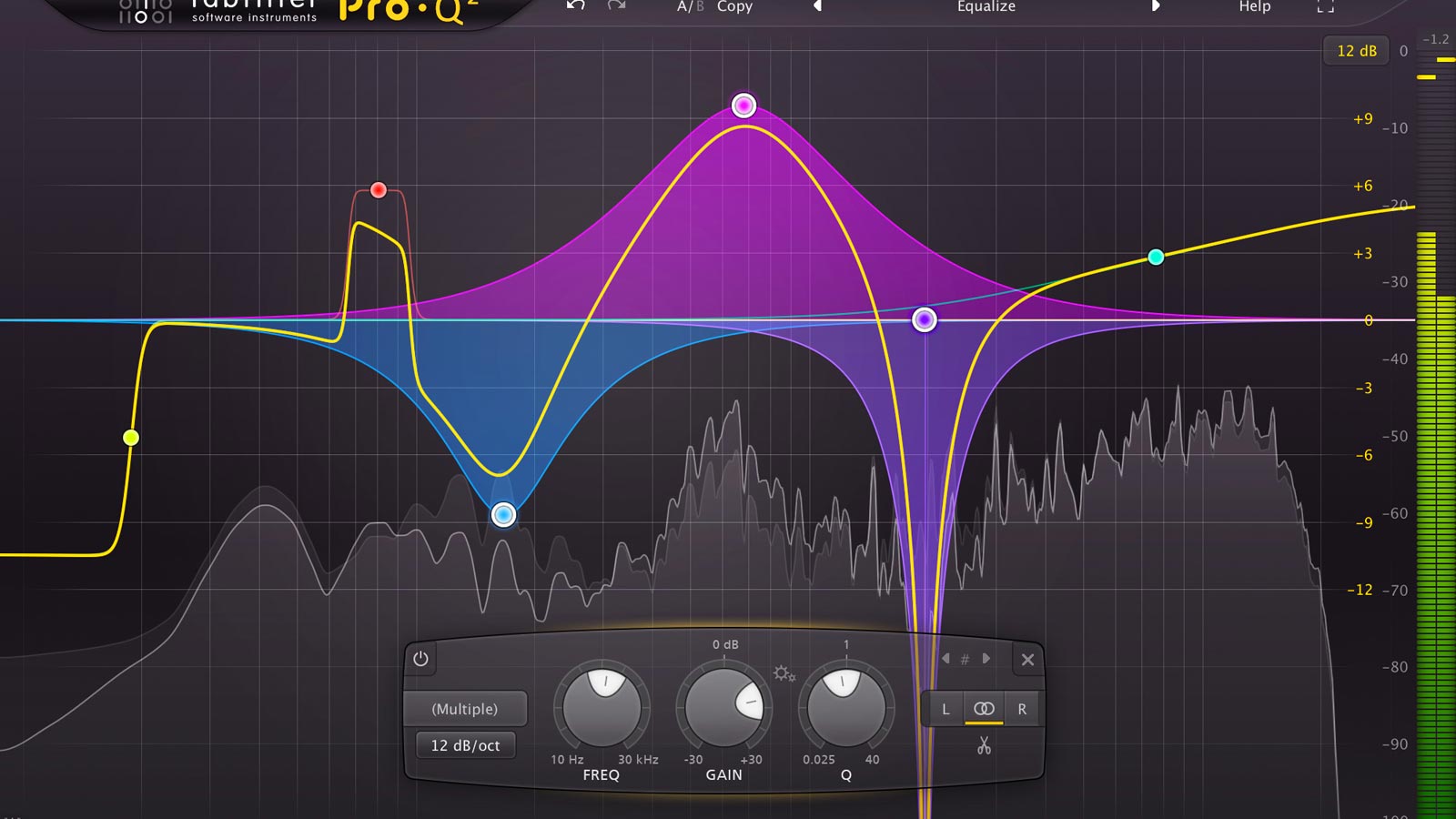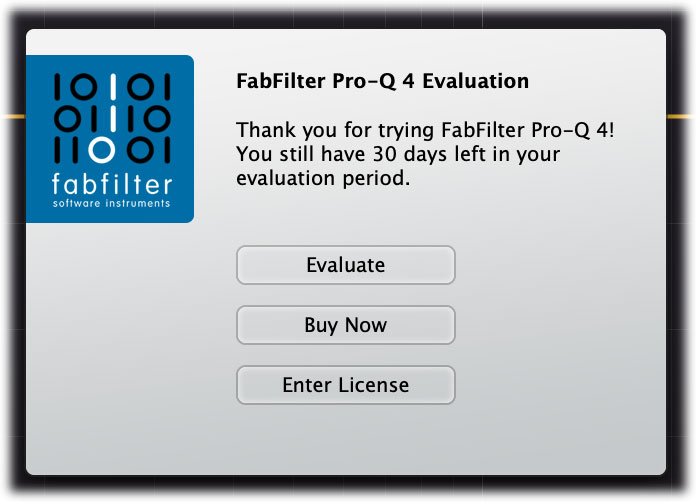
To quantize a frequency without using the piano display, just double-clickĪ curve dot in the display or the Frequency knob in the EQ controls, and enter a value like. Interface, the EQ display will fill the whole screen so you can make very precise adjustements. Fabfilter pro q 3 manual full#
In Full Screen mode, available via the button at the right top of the. Just double-click the scale to return to its default full range. While zoomed in, you can also drag left and right to move the frequency. Click and drag up and down to zoom in and out at the frequency you have. 
YouĬan easily do this by clicking and dragging the frequency scale at the bottom of the EQ display, Sometimes it might be useful to zoom in to a specific frequency for extra precise editing. When you are draggingĪ curve outside the current range of the display, the range will expand automatically as Top-right corner of the display at the top of the yellow scale, there is a drop-down button toĬhoose the display range: +/- 3 dB, 6 dB, 12 dB or 30 dB. The gray scale at the far right is used by the spectrum analyzer and output level meter. Note that two display scales are drawn: the yellow scale corresponds to the EQ band curves and In case you find the EQ parameter display to be distracting, you can turn it off via the Show EQ Parameter Display option on the Help menu.

Click the triangular menu button to access the band menu with more options. You can double-click a value in the display directly to edit it. Next to each EQ band's dot in the display, the EQ parameter display shows the exact parameter values for the EQ band, along with quick controls to bypass or delete a band, enter solo mode, and change its shape. This is a quick way to modify the EQ band while you're working in the
If you right-click on the dot for an EQ band, a pop-up menu appears with. Note that you can enter frequencies in various ways, like The Tab key to step through Frequency, Gain and Q) or double-click the values in the Double-click a dot to enter values in the EQ parameter display (using. Hold down Alt+ Shift and click the dot on an EQ band once to change its. Hold down Ctrl+Alt ( Command+Alt on macOS) and click the dot on an EQ. Hold down Alt and click the dot on an EQ band once to toggle itsīypass state (enabling or disabling the band). Hold down Alt while dragging to constrain to horizontalĪdjustments (frequency) or vertical adjustments (gain or Q, depending on the. Hold down Shift while dragging (or while using the mouse wheel) to fine-tune the settings of the. Hold both Alt and Ctrl (Alt+ Command on macOS ) to perform a linked change, trading gain for dynamic range. Move the mouse wheel while holding down Alt to adjust the dynamic range setting or Ctrl ( Command on macOS) to adjust the gain. This works while dragging or when the mouse pointer is above a curve.Īlternatively, adjust the Q of all selected bands by holding down Ctrl ( Command on macOS) while dragging vertically. Move the mouse wheel to adjust the Q setting, making. For dynamic bands, drag the dynamic range indicator up or down to adjust the dynamic range. If you have multiple bands selected, the gain ofĪll selected bands will be scaled relative to each other. Click and drag a selected dot to adjust the frequency and. You can now of course edit the EQ settings via the floating band controls, but the easiest way to adjust them is simply by dragging Once you have selected one or more EQ bands, the display highlights the shapes of the selectedīands. Deselect all bands by clicking anywhere on the display background. Hold down Ctrl ( Command on macOS) and click another dot to. Click and drag on the display background to select adjacent bands by. Click the EQ band's dot or the colored area around it to select it. Shelving filter? Drag the yellow curve at the left or right Want a Low Cut or High Cut filter? Double-click The shape of newly created curves is determined automatically depending on where you click,Īnd once you get used to this, it's a real time-saver! Do you need a Notch curve? Justĭouble-click in the far low area of the display. Hold down the Alt key while creating a band using the method above, to create a dynamic band instead of a normal band. Alternatively, double-click or Ctrl-click ( Command-click on macOS) on the display. To add a new EQ band, simply click on the yellow overall curve and drag it up or down. Recommend to take some time to read this topic and learn about all its options and shortcuts. Simple and straightforward, but holds a lot of intelligence and smart features. Thick yellow curve shows the overall frequency response and dynamic behavior of the equalizer. 
The large display shows all EQ bands and lets you easily create new bands and edit them.







 0 kommentar(er)
0 kommentar(er)
